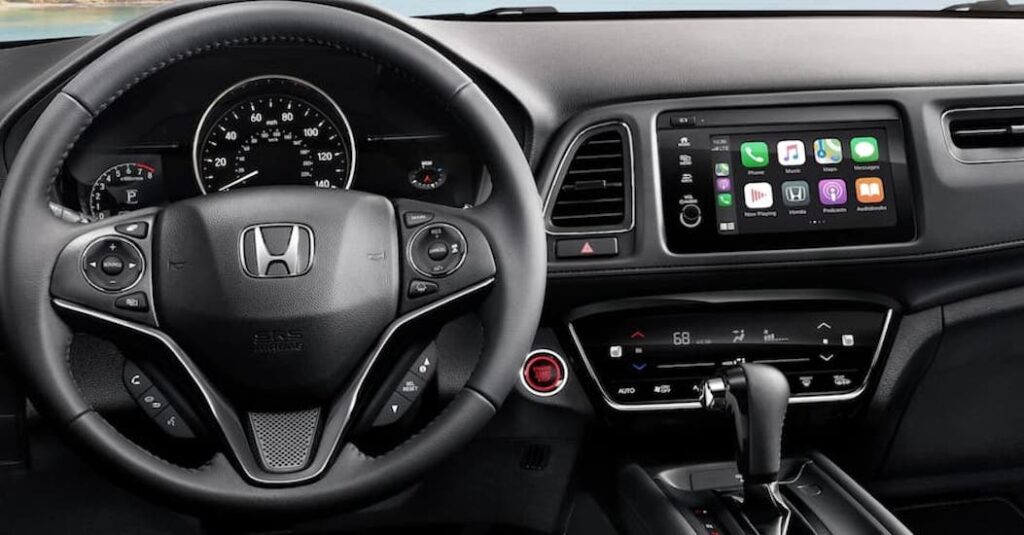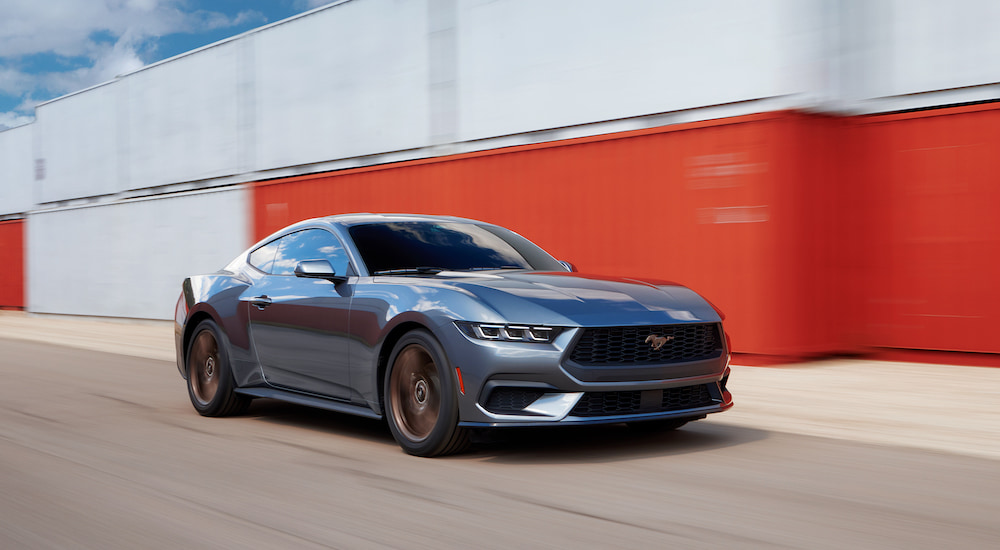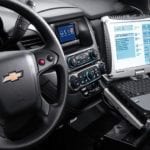For decades, all cars started the same way: inserting a key into the ignition, twisting it, and starting the engine. More recently, technology has developed to make starting a car as easy as pressing a button. The key is no longer physical but electronic and wireless, enabling it to stay in your pocket so you can’t possibly forget it or leave it behind. Interestingly, push-button starts aren’t actually a new technology. Cadillac used them a century ago. Later, they were replaced by physical keys, only to come back around in a newer version today. Let’s look at how they work and how their design can keep you and your vehicle safer.
Some Key Fob Basics
If you’ve bought a car in the last few years, then the odds are that you have a key fob rather than a traditional key for your vehicle. There’s some disagreement on where the term “fob” came from for the little device in your pocket or purse. Prior to these electronic devices, “key fob” typically referred to something larger on a keychain that could make it easier to find and distinguish it from other sets of keys. This likely goes back to “watch fobs” or ornaments worn on pocket watches. Some folks try to say that “fob” stands for “frequency operated button,” but since the word has been around and used a lot longer than it’s been tied to an electronic device, this is almost certainly a backronym (when someone makes an acronym of an existing word rather than the other way around).
Modern key fobs are small electronic devices consisting of a simple circuit board that includes a small controller chip and a transmitter. The fob sends a signal that your vehicle picks up with a receiver on its end. Your vehicle then performs an action based on which button you pressed, typically including things like remotely starting the engine, locking or unlocking doors, opening the tailgate, or setting off an alarm if your fob has a panic button.
An increasing number of vehicles these days have a passive system built into them that causes your car to do things like lock and unlock the doors automatically without you pushing a button. As long as you have the key fob on you, in a pocket or purse, once you get close to your vehicle, it will pick up a signal from the fob and allow you to unlock the doors by simply pressing a button on or near the door handle. This button also lets you lock the doors when you leave the vehicle and may even lock it automatically after you walk away to a certain distance. When combined with a push-button start system, you can get in, drive somewhere, and get out again without ever taking your keys out of your pocket, keeping things incredibly simple.
Some systems also let you use your phone with the appropriate app on it in place of your key fob, giving you most of the same functions. These systems will either send messages directly from your phone to your car or through the internet, but either way, the result is the same. Your vehicle detects your phone the same way it can detect a key fob, and you can use your phone and app to lock or unlock your doors, adjust climate control systems, and perform other features depending on your make and model.
Advantages of a Push-Button Start System
By adopting key fobs, car companies have eliminated the need for a physical key ignition, and now we have push-button start systems instead. These work the same way, but when you push the button, your vehicle triggers ignition in the engine and starts up rather than by physically turning a key. One of the biggest advantages of this type of system is that it’s easy to use and convenient. Plus, you typically can’t lock your keys in the car since it can detect that the fob is still in the vehicle and won’t lock you out. You also typically have to press down the brake pedal before you can use a push-button start system, so they can be safer to start since you have the brake engaged.
Drawbacks of Push-Button Start
Nothing is without its drawbacks in this world, and that is doubly true when it comes to any kind of new technology. One of the biggest drawbacks is that this is a fairly new system, and not everyone knows how to properly use push-button start (for example, needing your foot on the brake pedal), which can cause some problems. This becomes less of an issue with each passing year as the tech becomes increasingly common and everyone gets used to it. Perhaps the biggest disadvantage is that replacing a lost key fob is much more of a hassle and more expensive than replacing a car key. Personally, I think it’s worth the extra expense for how simple it makes daily use of your vehicle, but it’s still an issue.
Are Key Fobs Secure and Safe to Use?
The short answer is yes. The long answer is yes because the system used for key fobs today is much more complex than old garage door openers that could be easily spoofed. Key fobs use a system called rolling codes to ensure the same signal isn’t used repeatedly or between two vehicles, so someone else can’t use their fob to start your car. Your fob and vehicle are paired with a 40-bit (or larger) control code when first assembled. When you press a button, the fob sends this code along with a second function code to tell your car what to do. The function code is simple and always the same, with one code to unlock the doors and another to start the engine. When your vehicle gets this code, it does the associated task, but only if it also receives the rolling control code.
This control code, the 40-bit or larger one, is where security comes from. Using a 40-bit code means there are one trillion possible numbers, making it impossible for someone to brute-force your vehicle’s correct control code by guessing every conceivable number. Also, the same code isn’t used each time. Your fob and car start with the same initial code and use a pseudo-random number generator to generate a new, identical code each time you press the button. To be even safer, your vehicle will also accept 256 additional values beyond the next one, so if your kid grabs your key fob and starts pressing buttons on it, you won’t suddenly be de-synced from your car (unless they press the button more than 250 times).
In other words, someone else can’t use a device to capture your fob’s control code since it changes with each use, and there are so many possible numbers that it would take years for someone to try to brute-force the code from a trillion possibilities. Plus, different manufacturers use different code systems. Modern vehicles sometimes use even larger code systems than 40-bit to ensure there’s no way for someone to crack it.
The Convenience and Security Are Worth It
As you can see, key fobs are convenient, and the technology has been designed to be incredibly safe and secure. Of course, there are always going to be outliers, like what happened recently with Kia and Hyundai models and their starters, but that’s the fault of poor planning and being cheap rather than an issue with the tech. The convenience of keyless entry and remote start functionality is well worth the little hiccups we’ll inevitably get along the way. Hopefully, this will lead to better regulations and things like electronic immobilizers being required as standard in all vehicles. There are always growing pains with tech improvements, but in the long run, the way these things make our lives easier is worth a bit of hassle.






